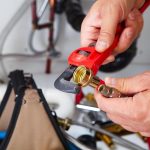While a small and uncomplicated type of component in any system, the vacuum check valve plays a critical role. Without the right valve, and without the right seal on the valve, the vacuum efficiency is greatly diminished if a vacuum can be created at all.
In design, the vacuum check valve is relatively simple. Most of the check valves used on vacuum systems are diaphragm check valves, but they can also include different options in design. The diaphragm check valve includes an inlet port, the diaphragm in the middle of the valve, and the corresponding outlet port. The pressure changes in the system automatically control the check valve operation, so there is no need for manual operation or other control mechanisms for the valve.
How They Work
Like all check valves, the role of these valves in a vacuum system is to prevent the flow of air from the low pressure or outlet side of the valve into the vacuum canister or tank. Without this type of effective seal, as the system was trying to create the vacuum, outside air would simply reverse flow up the hose or tube, preventing the ability to form the vacuum to create the suction required.
The vacuum check valve is most often used with a low-pressure system. This is usually a system that is operating at 50psi or less. These valves are typically made of plastic and are extremely compact, so they are easy to install in the system.
Most tubing for these types of systems is small bore, which means the miniature types of check valves are the ideal solution. The two ports, the inlet, and the outlet are simply inserted into the tubing to install the valve. Typical installation location is just in front of the vacuum canister, preventing even small amounts of backflow through the system during operation.








